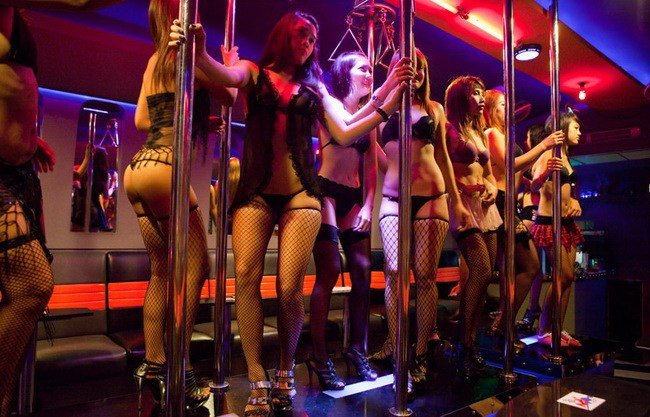Different appearance than it used to be ‘Pattaya Sin City’
The bold declaration by a sustainable tourism organization to turn Pattaya from “sin city” into a family entertainment destination has been greeted with disbelief. Some people told the organization to be more realistic while others simply dismissed its vision as an April’s Fool joke that came early this year.
The Designated Areas for Sustainable Tourism Administration (Dasta) made the statement that it is trying to improve Pattaya’s image among foreigners following an unflattering report recently published in The Mirror.
Entitled “Inside the World’s Sex Capital”, the report said that although prostitution is illegal in Thailand, there are reportedly 27,000 prostitutes making a living in the Chon Buri beach resort which sees more than a million visitors each year.
The report claimed that was about one in every five of the city’s residents.
The report claimed Pattaya houses the “largest red-light district on earth”, where “scantily-clad Thai women, faces whitened with foundation, offer massages to passing Western men”. It also said there are brothels “in abundance” in the city it said has been dubbed a “modern-day Sodom and Gomorrah”.
The report has undoubtedly irked Thai officials who believe the tabloid’s article painted an excessively negative image of Pattaya and Thailand in general.
Muang Pattaya superintendent Pol Col Apichai Krobphet flatly denied the report saying it presented inaccurate and misleading information about the resort city. He said Pattaya thrives on nature tourism, not sex.
Pol Col Apichai also denied the report’s allegation that there is prostitution in Pattaya. He said Pattaya police have been stringent in monitoring prostitution and human trafficking in the city.
The sustainable tourism administration or Dasta was next to respond to the sin-city report.
Dasta deputy director-general Taweebhong Wichaidit said a plan is underway to change Pattaya’s image to be more family friendly. The agency will seek to promote places that offer scenic views of nature and rich local culture as alternatives to the current selling points of beaches and nightlife.
Mr. Taweebhong admitted the image makeover will be difficult but believed it was necessary. The new tourism focus will help strengthen local communities while ensuring that tourism income is distributed more fairly.
The reactions from the local police and sustainable tourism office are predictable considering they are professionally inclined to protect their own organizations as well as those of the country, which cherishes its Buddhist ideas and age-old traditions.
It is no surprise either that the official responses have provoked nothing but skepticism and derision. Before spinning a far-fetched yarn about what they wish to see Pattaya become, authorities must come to terms with the city’s reality.
Police may debate claims by the British media article about Pattaya being the largest red-light district on earth but they cannot whitewash the beach resort as being a popular tourist attraction based on nature’s offerings only. The truth about Pattaya and numerous of go-go bars is plain to see.
On Wednesday, local police reportedly raided a bar and arrested several suspected prostitutes. This should add to the more than 2,000 suspected prostitutes arrested in Pattaya last year according to news reports.
Should the country do something about sex tourism? Of course, it should. Tourism Minister Wattanavrangkul last year promised to eradicate sex tourism and reinvent the country’s attraction in the eyes of foreign travelers as a lifestyle and culture destination.
There is not much the government or local authorities can gain by denying the foreign media’s report about Pattaya. The attempt to whitewash is not going to give the city a better image. It is only sincere actions, constructive policy choices and effective implementation that will save the beach town from notoriety. Source: Nemo, BangkokJack




